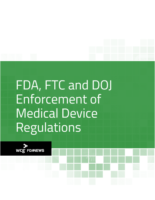
Home » Defining Training: How Does It Change Behavior?
Defining Training: How Does It Change Behavior?
When you ask them to define the word “training,” even seasoned trainers and instructional designers often are not able to provide a concise answer. Training may best be defined as an organized attempt to change behavior. The science of psychology tells us that there are only three areas of behavior that training can change: cognitive, psychomotor and affective behavior.
Cognitive
Cognitive behavior is also known as the area of knowledge. In this behavioral domain, we can add to or revise the body of knowledge an individual possesses. A simple example is explaining a new gowning procedure required for certain areas of the facility. After training, employees know what is required of them.
Psychomotor
Psychomotor behavior is the demonstration of skills or physical manipulation of the body. In this behavioral domain, we can add to or revise someone’s performance of a particular task or skill. For example, we can teach someone how to don a cap and gown properly by helping them do it. If that person can then perform the task successfully, we have affected his or her psychomotor behavior.
Affective
Affective behavior is the most intangible of the three. It can best be described as how we feel or think about a given subject. Advertising, for example, aims directly at changing an audience’s affective behavior. It does not try to provide any real knowledge about a product or teach any skill involved in using a product. Advertising is all about making you feel or think that using a product will enhance your well-being; making you feel or think that using a particular product is good for you.
The same principle can be applied to training. For example, we can teach employees proper gowning procedures: the new knowledge effects a change in their cognitive behavior and the new skill in their psychomotor behavior. But have we changed their affective perception of the task? Do they understand why it is important to perform the task correctly?
To answer those questions, we can observe facility personnel to see if they are now meeting the gowning requirements. If they are, we have reason to believe that the training successfully changed their affective behavior. They have understood and accepted the message that proper gowning is important.
Most training attempts to impact at least one of these behavior domains. Trainers need to know which one(s) they are aiming for and how to assess the result even before the training is conducted. Focus on the type of behavior change you want to see when planning your next training session.
Contact Information:
Dave Gallup
GMPTraining.com, Inc.
18585 Coastal Highway
Unit 10, #149
Rehoboth, DE 19971
215-870-5665
dagallup@gmptraining.com
www.gmptraining.com
Upcoming Events
-
23Apr
-
25Apr
-
07May
-
14May
-
30May
